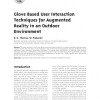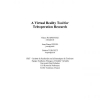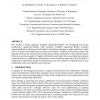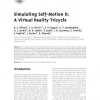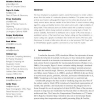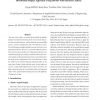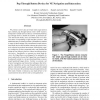114
Voted
VR
2002
IEEE
15 years 12 days ago
2002
IEEE
: This paper presents a set of pinch glove-based user interface tools for an outdoor wearable augmented reality computer system. The main form of user interaction is the use of han...
107
Voted
VR
2002
IEEE
15 years 12 days ago
2002
IEEE
114
Voted
VR
2002
IEEE
15 years 12 days ago
2002
IEEE
This paper addresses the issue of improving the perception of contact that users make with purely virtual objects in virtual environments. Because these objects have no physical c...
97
Voted
VR
2002
IEEE
15 years 12 days ago
2002
IEEE
When people move there are many visual and non-visual cues that can inform them about their movement. Simulating self motion in a virtual-reality environment thus needs to take th...
107
Voted
VR
2002
IEEE
15 years 12 days ago
2002
IEEE
Much of the current research in the design of virtual environments is centred on laboratory prototypes and emphasis is placed on supporting cooperation within the virtual world its...
133
Voted
VR
2002
IEEE
15 years 12 days ago
2002
IEEE
We describe a design approach, Tangible Augmented Reality, for developing face-to-face collaborative Augmented Reality (AR) interfaces. Tangible Augmented Reality combines Augment...
108
Voted
VR
2002
IEEE
15 years 12 days ago
2002
IEEE
: When simulating self-motion, virtual reality designers ignore non-visual cues at their peril. But providing non-visual cues presents significant challenges. One approach is to ac...
115
Voted
VR
2002
IEEE
15 years 12 days ago
2002
IEEE
We have developed a visualization system, named Atomsviewer, to render a billion atoms from the results of a molecular dynamics simulation. This system uses a hierarchical view fr...
108
Voted
VR
2002
IEEE
15 years 12 days ago
2002
IEEE
The aim of this study is to explore the feasibility of multiple display environment technology in the real world. In this paper, the wearable projector, with an infrared camera an...
103
Voted
VR
2002
IEEE
15 years 5 months ago
2002
IEEE
We present a novel class of virtual reality input devices that combine pop through buttons with 6 DOF trackers. Compared to similar devices that use conventional buttons, pop thro...
